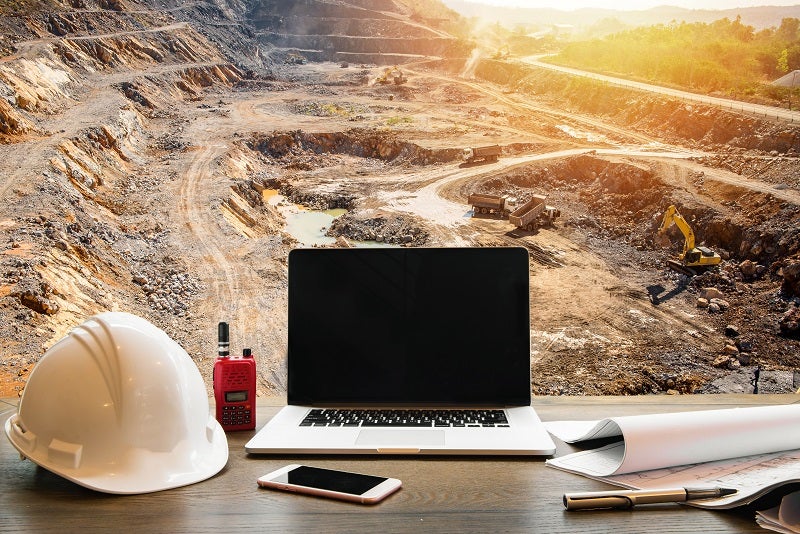
Australia is leading the charge when it comes to using connectivity and technology to increase efficiency in the mining industry and they’re boldly using the Internet of Things to stay connected and control process instrumentation. Vega’s John Leadbetter explains how his company is giving operators better and faster access to information is allowing them to predict problems, rather than react to them.
How are the latest advancements in technology making mines more efficient?
With the advent of Bluetooth and wireless and the latest advancements, we’re seeing improved accessibility for maintenance personnel as well as improved safety across the site.
Have these developments in data been one of the biggest drivers behind improving efficiency in the industry?
Definitely. Like any other business, mining is looking to improve efficiencies and bring down its costs, so anything that gives them that increased performance or reliability is something that operators should take on board and use.
Are all operators taking these advancements on board or are some lagging behind?
In general they are, but you will always get the smaller operators that are cost-restricted. With technology such as Bluetooth, the advantage is that wherever you have a tablet or a smartphone, they have access to that equipment. The take-up here in Australia has perhaps been better than in other countries. We are now one of the leaders in implementing these new technologies in the mining industry.
But communication back to the control room is something that has always been done, it’s just that now it’s more informative, giving the ability to predict rather than react. It also means engineers don’t always have to be sent out to the mines to conduct field checks, but they’re able to do it wirelessly via Bluetooth, without interference to the running of the plant. These checks are now very simplistic, and here at Vega we have made our menus as intuitive as possible.
It’s this simplicity that has really helped to improve the overall take-up of this technology.
How can effective process instrumentation help to improve an operation’s efficiency?
It’s really about getting the most out of what you have. Running at maximum efficiency is great, but as soon as you come down from that, you have to investigate the reason why. With process instrumentation, they are the sensors in the field that are telling the operators or metallurgists what’s going on. So the more accurate information you get back, the more efficiently and reliably they can run their plant.
What are the repercussions of running inefficient equipment?
The first thing is that your reliability is in question. In a break down situation it would be more costly. You may also not be getting all the information back from the field that you require. Mining companies are also competitors with each in the market, so the better you run your plant, the more reliable you are to customers and you’re able to meet client orders and fulfil contractual obligations.
As far as an operator or technician is concerned, they would much rather work on a site that runs efficiently than one that breaks down all the time. And while you have that efficiency, you don’t need as many people on site, so your staff levels don’t have to be a high as they were 15 years ago which is another cost saving.
There are two ways that operators will look at a mine when deciding if it will go ahead for production. They will look at the initial cost, and they will look at the running cost. If their running costs outweigh the ROI, there is a reluctance to go ahead.
How does Vega help to improve mine efficiency?
We’re manufacturers of level, pressure and radiation. Our concentration is on those three areas so we’re able to invest R&D experience into those particular areas. Our R&D processes are constantly looking at ways to improve efficiencies. We have had Bluetooth out now for three years, so we are in many ways driving the market through our innovations.
The two biggest mining industries in Australia are coal and iron ore. In iron ore, they are currently looking at autonomous mines, so mines that can run without any personnel present. Some of these operators are running autonomous trucks, taking their vehicles from a major city via a remote control. Without someone driving the truck, you reduce the risk of injury to personnel and you have central control system that is controlling the operation of your mine.
With our equipment now heading towards advanced technologies, operators can implement those types of devices within their autonomous operation because the information coming back to them is giving them the feedback to ensure that everything is running correctly.
Everybody talks about IoT, but it’s important to remember that it’s all about information and communication. We’re only scratching the surface at the moment about what the possibilities are. The further we go into this new era, the more we are going to discover what we can do.
Ultimately, we’re selling equipment to customers based on reliability and cost-savings, so the more we work with the market, the more the market works with us and the better the chance of us coming up with improved equipment solutions for our customers.
Technology doesn’t stop. It improves each year.



